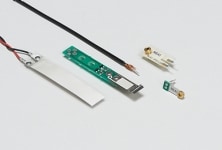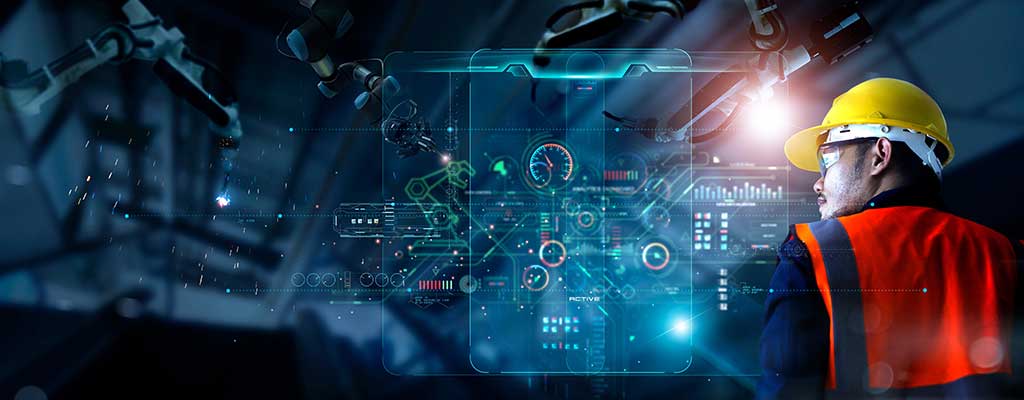Now on Spotify
TE's Erin Bryne talks to Clarivate about the value of innovation culture
Our CTO for Industrial Solutions discusses the crucial role collaborating with our customers plays in innovating faster and helping them win in their markets.

TE Perspectives
Advanced Sensors for a Connected World
Author: Erin Byrne, VP and CTO, Industrial Solutions
As the world becomes more connected, intelligent and automated, the role of sensors is expanding. Sensors perform the critical task of collecting input from the environment and turning it into useful data in almost every industry—from healthcare and agriculture to manufacturing, communications, building systems and transportation.
However, every application needs sensors to provide the most valuable data. That means engineers must consistently innovate to develop sensors that more precisely detect conditions such as position, speed, vibration and pressure, as well as temperature, humidity and fluid conditions. And with manufacturers embedding sensors in more and more devices, the key trends are to be smaller, more rugged and more reliable.
TE Connectivity creates sensors that work closely with our connectivity products, giving us unique insight into the demand for innovation across different industries. We’ve seen countless ways sensors can improve our lives, but here are some of the most interesting developments.

Sensor-Driven Healthcare Innovations
One can see how miniaturized, high-performance sensors enable advancements in medical technology just by looking at the millions of people who wear health and fitness trackers on their wrists. But some of the most important innovations are happening in specialized applications like minimally invasive surgeries.
Sensors are critical for delivering the feedback that surgeons need to work safely inside a patient’s body. Force sensors can tell the surgical team exactly when a cutting tool is touching human tissue, temperature sensors can help protect nearby tissue from damage during laser surgery, and pressure sensors allow for control of the most sensitive body parts where gases are an important part of the procedure.
Think about cataract surgery that requires a tiny incision through the cornea to remove a clouded lens. Applying just the right amount of pressure is essential to avoid damaging the eye, but that requires sensors that provide extremely precise pressure measurements—in an extremely small package. Today’s advanced sensors achieve the balance between miniaturization and high performance that’s needed for minimally invasive surgical tools.
Improved sensor technology is also creating new ways to perform traditional medical procedures and measurements. For example, blood pressure and heart rate monitoring are part of nearly every visit to a medical office or hospital, but often require a nurse to take those measurements. Today, high-performance piezoelectric film sensors are sensitive enough to record a patient’s pulse and respiration rate just from contact. By embedding these films into an examining room table or even a chair in the waiting room, patients can have their vital signs monitored automatically from the time they enter the office—creating a better patient experience and better data collection for medical professionals.
TE's Broad Portfolio of Sensors Types
Predictive Maintenance to Prevent Industrial Equipment Breakdowns
The movement toward intelligent factories is expanding the role of sensors and the data they collect. For decades, industrial machines have relied on sensors to measure operating variables like position and torque, as well as vibration, temperature and fluid properties critical to reliable performance. However, avoiding equipment failure requires scheduled maintenance that can take important assets offline and slow down production.
From a factory owner’s standpoint, it’s better to know exactly when a machine needs maintenance to maximize uptime. Predictive maintenance is now possible thanks to sensor systems that can monitor a machine’s performance, detect when there is excessive wear-and-tear or risk of a breakdown, and alert operators that it needs attention.
Variables like temperature and vibration often indicate potential stress on a piece of equipment. For example, taking the output from a temperature or vibration sensor and comparing current levels against historical patterns can help a company detect when a machine operates outside of its safe range. The computing capability needed to perform this analysis can be achieved through sensors with embedded microprocessors, giving an automatic alert when it’s time for maintenance. However, some manufacturers may take the process a step further by combining sensors with a wired or wireless connection to send performance data to the cloud, where machine learning or artificial intelligence can look beyond maintenance requirements to find other opportunities to optimize equipment performance.
Sensors to Enable Automated Vehicles
Perhaps the greatest promise for sensor technology—and the biggest challenge—is the development of fully automated vehicles. Sensors are already everywhere in a modern vehicle, even those that aren’t apparent to the driver. TE provides a range of sensors to monitor motor and battery performance of electric vehicles (EVs), oil property sensors for internal combustion engines, humidity sensors for air conditioning units, and nearly every other kind of system.
Still, most manufacturers and consumers want to see innovations enabling automated driving capabilities. The Society of Automotive Engineers defines six levels of vehicle autonomy, from basic lane-keeping assistance and adaptive cruise control (level 1) to parking assistance and collision avoidance (level 2). Those systems are in regular use today, often relying on optical sensors to detect potential collisions at low speed or to keep cars within their lanes. But the technological demands for fully automated vehicles (level 5) are significantly higher.
To truly operate without a driver’s control, a vehicle needs 360-degree visibility to detect what’s happening around it, interpret the meaning of those signals, and calculate an appropriate action that takes into consideration conditions such as speed, weather conditions and surrounding obstacles. And those calculations need to happen in milliseconds.
The basic sensor technology for these systems already exists. The real challenge is computing capabilities: How can we design vehicles intelligent enough to act on the data they receive from their environment? Human behavior is another hurdle for autonomous vehicles, because it will take a long time for many drivers to adjust to the idea of hands- and foot-free driving, or to feel comfortable enough to fall asleep in the driver’s seat.
For those reasons, we believe fully autonomous vehicles are still a way off. In the meantime, TE is committed to working with automotive customers on their sensing requirements, such as adapting optical sensors for improved night vision, adding value to sensor components with processing capabilities, and combining our sensor products with wired or wireless high-speed data connectivity. By thinking about sensors as part of a technology platform and continually looking for ways to add value to those systems, we’re working to ensure that the sensing and connectivity technology will be ready when computing capabilities and human nature are ready for the world of fully automated vehicles.
About the Author

Erin Byrne
Erin Byrne, Ph.D., currently serves as the Vice President and Chief Technology Officer for TE's Industrial Solutions segment, driving innovation and productivity. Previously, Erin served as TE's Vice President and Chief Technology Officer for Communications Solutions segment and CTO for TE's Sensors and Data & Devices businesses, playing a vital role in developing next-gen connectivity products for cloud computing, 5G wireless, and the Internet of Things. Erin holds a Ph.D. from Cornell University, five U.S. patents, and has published over ten papers in prestigious journals like Science, as well as authoring a book chapter on doping methods for InP devices.
Insights on Innovation in Technology
Executive Insights: More stories on tech innovation
 e
e
 e
e
 e
e

 e
e

 e
e

